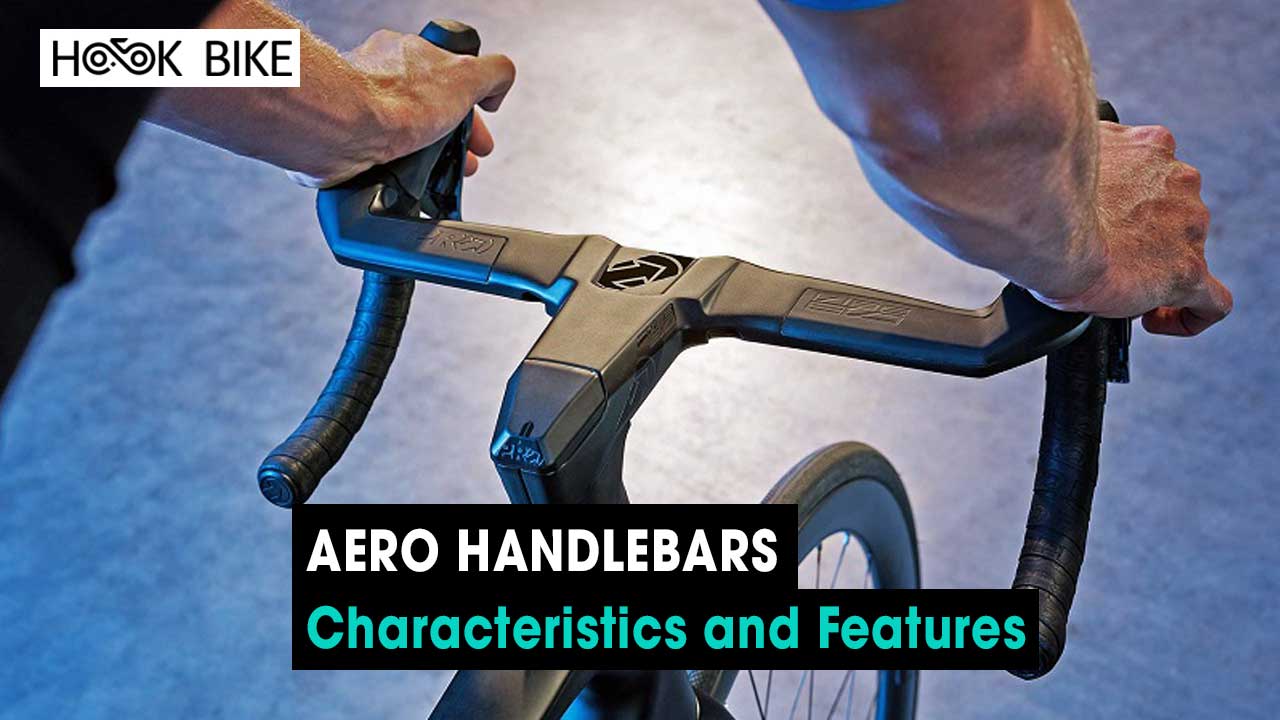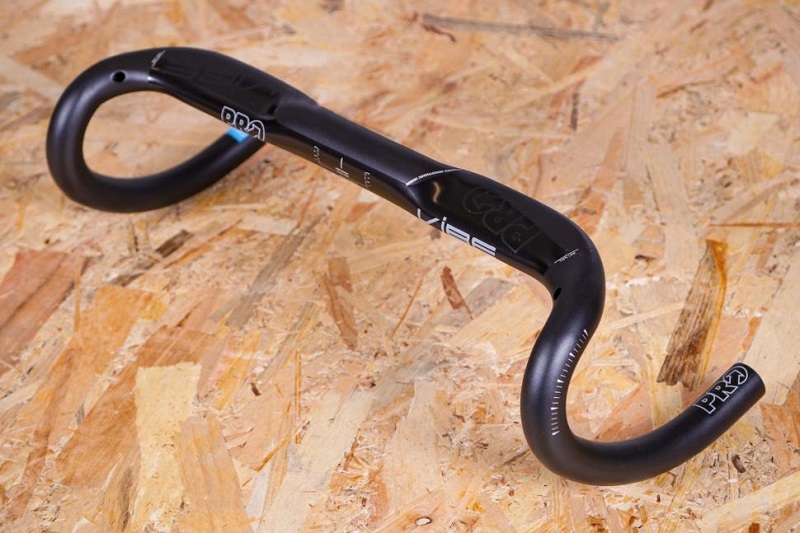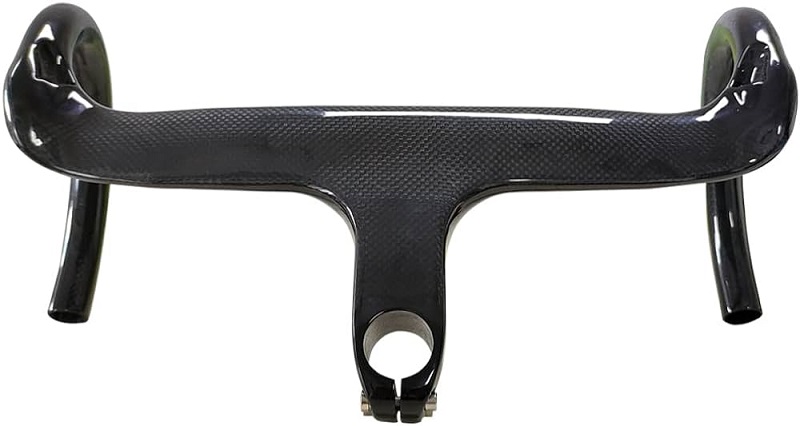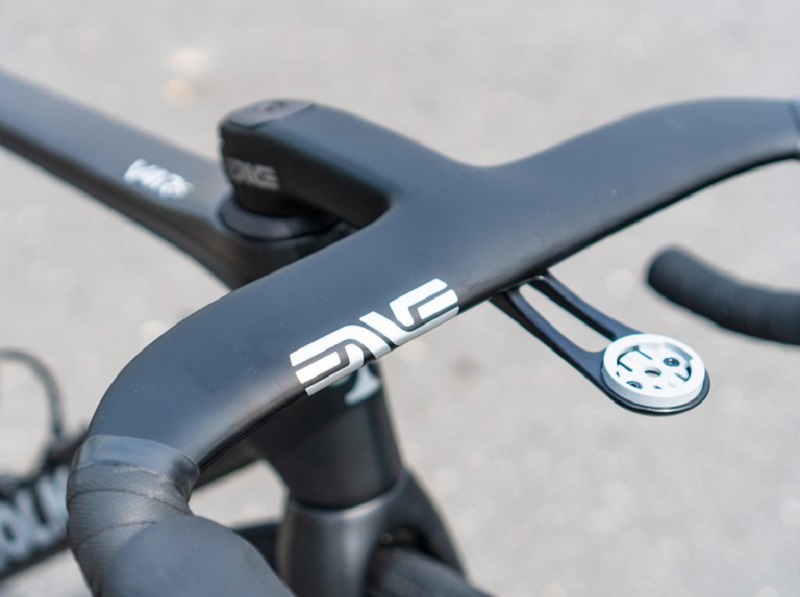Parts
Aero Handlebars: Characteristics and Features
In the world of competitive cycling, the smallest details can make the most significant differences. Among the myriad of cycling components, aero handlebars stand out as one of the most vital innovations. These handlebars, designed for maximum aerodynamic efficiency, can provide an edge to racers and enthusiasts alike. In this article, HookBike’s will delve deep into the characteristics and features of Aero handlebars, shedding light on their importance, design nuances, and the benefits they offer to cyclists.
Origin and history of Aero Handlebars
Aero handlebars, also known as aero bars or triathlon bars, are primarily used in time trials and triathlons to allow riders to adopt a more aerodynamic position, reducing wind resistance and improving speed over long distances. They have a unique design that extends forward from the central part of the handlebars and has pads for the rider to rest their forearms on. Here’s a brief history and origin of aero handlebars:
Early Beginnings: The pursuit for aerodynamic efficiency in cycling has always been a significant concern. From the early days of cycling, riders experimented with various riding positions to minimize wind resistance.
1980s Introduction: The aero handlebar as we recognize it today became popularized in the 1980s. One pivotal moment was during the 1989 Tour de France when Greg LeMond made a stunning comeback in the final time trial, beating Laurent Fignon by 58 seconds to win the overall race by just 8 seconds. LeMond used aero bars, which many believed gave him a significant aerodynamic advantage.
Adoption in Triathlon: Triathletes were quick to adopt aero bars due to the importance of cycling efficiency in their multi-discipline races. The ability to rest the forearms and maintain an aerodynamic tuck position for extended periods made them invaluable for long-distance races.
Regulations and Limitations: Given the advantage that these handlebars provided, cycling governing bodies such as the UCI (Union Cycliste Internationale) introduced regulations limiting their use in specific events and dictating their design to ensure a level playing field. As a result, aero bars are primarily seen in time trials and non-UCI events like triathlons.
Evolution and Design: Over the years, the design of aero bars has evolved. Initial designs were add-ons to existing handlebars, but modern iterations are often integrated into the bike’s design, with manufacturers producing time trial and triathlon-specific bikes. The materials, ergonomics, and adjustability have also significantly improved, allowing riders to find their perfect aerodynamic position.
Aero handlebars have been a significant development in the world of competitive cycling, enabling riders to achieve greater speeds by optimizing their position against wind resistance. Over the decades, their design and usage have evolved, but their core principle remains: to provide an aerodynamic advantage to the rider.

Aerodynamic Advantages of Aero Handlebars
The aerodynamic advantages of aero handlebars (or tri-bars) can be significant, especially during time trials and triathlons where shaving off even a few seconds can lead to a substantial competitive edge. Here are the primary aerodynamic advantages of using aero handlebars:
Reduced Frontal Area
One of the most critical aspects of aerodynamic efficiency is reducing the frontal area that encounters wind resistance. By using aero handlebars, a rider can lean forward and tuck their body in, decreasing the amount of body surface that the wind hits directly.
Streamlined Body Position
The forward position promoted by aero bars encourages a more horizontal alignment of the back, creating a smoother airflow over the rider’s body. This streamlined position reduces turbulence and drag.
Arm Position
In a standard riding position, the arms are often spread out, which can create additional wind resistance. Aero bars allow the arms to be placed closer together and in line with the body, presenting a more streamlined shape.
See more: types of handlebars for bicycles

Improved Airflow over Legs
The tucked position can also channel airflow more effectively over the rider’s rotating legs, reducing the vortexes and turbulent air that can be generated by pedaling.
Energy Conservation
While this isn’t directly an aerodynamic advantage, it’s an important related benefit. The forearm support provided by aero bars allows some of the body’s weight to be offloaded from the hands and wrists. This can lead to less fatigue over long distances, enabling a rider to maintain an aerodynamic position for longer.
Integration with Bike Design
Modern time trial and triathlon bikes are often designed with integrated aero bars. This means that the entire bike, including the frame, wheels, and handlebars, is optimized for aerodynamics. When a rider uses aero bars on such a bike, the combined effect of all these design elements can offer significant aerodynamic benefits.
Reduced Helmet Drag
Some time trial helmets are designed to work most efficiently with the body position adopted when using aero bars. The elongated shape of these helmets streamlines the airflow from the top of the rider’s head down their back.
It’s worth noting, however, that while aero handlebars provide clear aerodynamic benefits, they require practice and conditioning to use effectively. Riding in an aero position uses different muscle groups, and riders need to train specifically in this position to maximize its benefits without compromising power or comfort. Additionally, a proper bike fit is essential to ensure the optimal balance between aerodynamics, power output, and comfort.

Design Characteristics of Aero Handlebars
Aero handlebars, often seen on time trial and triathlon bikes, are designed to improve a cyclist’s aerodynamics. They have distinct design characteristics that set them apart from regular road bike handlebars:
Extensions
The most distinguishing feature of aero handlebars is the forward-projecting extensions. These extensions allow the rider to stretch out and lean forward into a more aerodynamic position. The extensions can be straight, S-bent, J-bent, or have other shapes based on rider preference and the specific aerodynamic goals of the design.
Arm Pads
Attached to the base bar and situated just before the extensions begin, these pads provide a place for the rider to rest their forearms. The arm pads are usually cushioned for comfort, and their positioning helps the rider maintain a stable and aerodynamic position.

Base Bar
The base bar is the primary handhold when not in the aero position. It’s often flat or slightly curved and is wider than the extensions. The design is meant to be aerodynamic while also providing control during technical parts of a ride, such as cornering or climbing.
Adjustability
Many modern aero handlebars come with a range of adjustability options. This can include the length and angle of the extensions, the width and tilt of the arm pads, and sometimes even the width of the base bar. This adjustability allows riders to fine-tune their setup for optimal aerodynamics, power output, and comfort.
Integrated Brake and Gear Shifters
Depending on the design, aero bars can have integrated brake levers on the base bar and gear shifters at the tips of the extensions. This allows the rider to shift gears while maintaining the aero position.
Material
Aero handlebars are typically made from materials like carbon fiber or aluminum. Carbon fiber is favored for its lightweight and stiffness properties, while aluminum is often more affordable.
Internal Cable Routing
To maximize aerodynamic efficiency, many aero handlebars are designed with internal cable routing. This means that brake and shifter cables run inside the bars, reducing drag by preventing cables from being exposed to the wind.
Profile
The cross-sectional profile of the bars, especially the base bar, is often designed with aerodynamics in mind. This can mean teardrop shapes or other profiles that reduce aerodynamic drag.
Integration with the Bike
On high-end time trial and triathlon bikes, the aero handlebars are often seamlessly integrated into the bike’s design, further improving aerodynamics. This can include stem integration and even the blending of the base bar with the frame’s top tube.
See more: Flat Handlebars
Stiffness
While aerodynamics is a primary concern, the bars must also be stiff enough to handle the power output from the rider, especially during intense efforts. This is often a balance that manufacturers strive for—ensuring the bars are both aerodynamic and functional.
When choosing aero handlebars, it’s essential for riders to consider their individual needs, including their body geometry, flexibility, and the specific events they participate in. A proper fit and adjustment are crucial to reap the benefits of the aerodynamic design while also ensuring comfort and efficient power transfer.

How Aero Handlebars Enhance Performance?
Aero handlebars, commonly used in time trials, triathlons, and certain long-distance cycling events, have a significant impact on a cyclist’s performance. The benefits come down to a combination of improved aerodynamics, biomechanics, and energy conservation:
Improved Aerodynamics
- Reduced Frontal Area: Aero handlebars allow a rider to tuck into a more streamlined position, reducing the frontal area that faces wind resistance.
- Smooth Airflow: The forward and tucked position reduces turbulent airflow around the rider’s body, which can significantly decrease drag.
- Decreased Drag Coefficient: The combined effect of the rider’s body position and the handlebars’ design results in a reduced drag coefficient, meaning the rider faces less resistance for a given speed.
Biomechanical Benefits
- Muscle Engagement: The forward position can change which muscle groups are emphasized during cycling. For some riders, this position can result in more effective engagement of the glutes and hamstrings.
- Spinal Alignment: Being stretched out might alleviate stress on certain parts of the spine, potentially benefiting riders with specific postural or back issues.
- Respiratory Efficiency: The extended, open chest position might help some riders breathe more deeply and efficiently, though this can vary from person to person.
Energy Conservation
- Reduced Work Against Air Resistance: With improved aerodynamics, the rider has to expend less energy to maintain the same speed or can go faster with the same energy output.
- Resting Points: The arm pads on aero bars provide a resting point for the forearms, potentially reducing upper body fatigue over long distances.
- Stable Position: This stability can help riders maintain a consistent pedal stroke, leading to more efficient power transfer and less energy wastage.
Enhanced Focus on Endurance
- Less Need for Repeated Acceleration: In time trials and triathlons, where consistent speed is essential, the aerodynamic position helps maintain a steady pace, reducing the energy expenditure of repeatedly accelerating.
- Mental Focus: Being in a dedicated aero position can also mentally reinforce the importance of maintaining a consistent effort and speed.
Optimized Equipment Integration
- Integrated Design: Many modern time trial and triathlon bikes are designed with aero handlebars as part of an integrated aerodynamic system, enhancing the overall performance benefits.
- Synergy with Other Equipment: The aero position is often optimized for use with other aerodynamic equipment, like time trial helmets and skinsuits.
See more: Bullhorn Handlebars

It’s worth noting that while aero handlebars offer clear performance advantages, they require practice to use effectively. Riding in this position can feel different and might initially be uncomfortable for some. Training in the aero position is essential, not just for comfort but also to ensure that the rider can maintain power output and efficient pedaling mechanics. Proper bike fitting is also crucial to maximize benefits and prevent potential injuries.
Conclusion
Aero handlebars represent a confluence of design, technology, and function. Their aerodynamic characteristics, combined with their ergonomic design and features, make them an indispensable component for those serious about cycling performance. Whether you’re a professional racer or a weekend enthusiast, investing in aero handlebars can dramatically enhance your riding experience, providing both speed and comfort advantages.

